
When it comes to temples of various religions, most people imagine «air» buildings that soar into the sky with interiors flooded with light. But it turns out that not all places of religious cults correspond to this architectural concept. People also built underground religious complexes, and some of them have survived to this day..
1. Rock churches
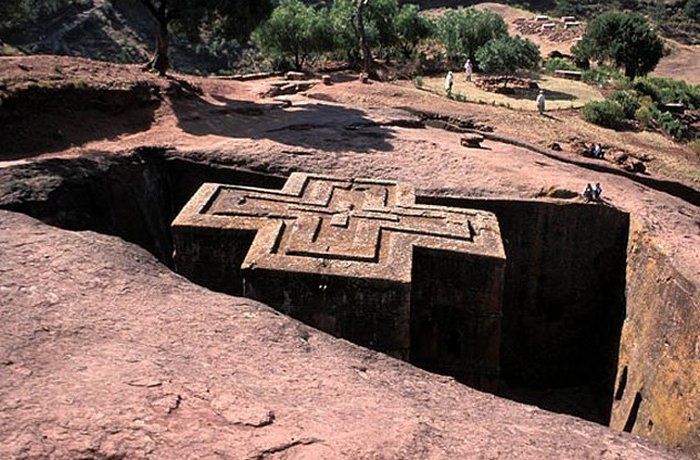
Ethiopia
The most common and easiest way to make a building is to stack the building components until you have the desired structure. Another way is to start construction right in the bedrock and modify it until the structure is formed. This is exactly what the stone church builders in Lalibela, Ethiopia decided to do..
Each of the local churches is a single structure carved right into the rock. In total, Lalibela has 11 monolithic churches carved into the rocks in the 12th century. In one of the churches, you can find exact copies of the tomb of Adam, the tomb of Jesus and the tomb of the Birth. Legend has it that thousands of workers worked during the day, but construction continued at night by angels.
2. Mogao caves
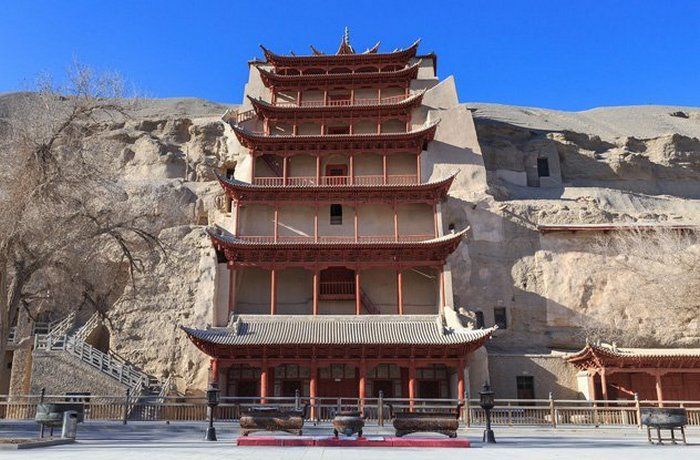
China
The Dunhuang Oasis in China was once a major stop on the Silk Road, the overland trade route between Europe and China. This city has grown over the centuries. And where there are cities, there will be temples. The Buddhists of Dunhuang, the earliest Buddhist community in China, carved their temples in the nearby Mogao Caves. Since the beginning of this practice in the 4th century, 492 ornate cave temples have been built in Mogao. Their walls are brightly painted with religious and secular scenes in a variety of styles, reflecting the faith of the peoples who met along the Silk Road.
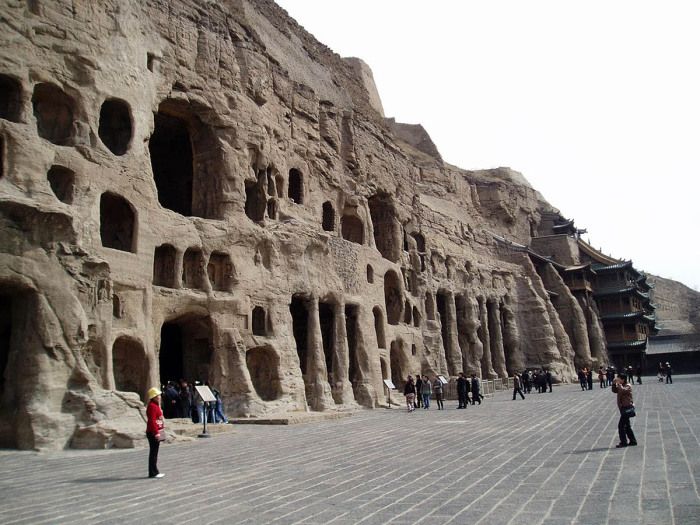
Walls «Thousand Buddha Caves» fully lined with miniature Buddha carvings. And besides Buddhist art, evidence of Jewish, Christian and Manichean influences was found in local caves. In 1900, a cave was opened, sealed for over 900 years, and many manuscripts were found in it. One of these documents turned out to be the oldest printed book in the world..
3. Hal-Saflieni
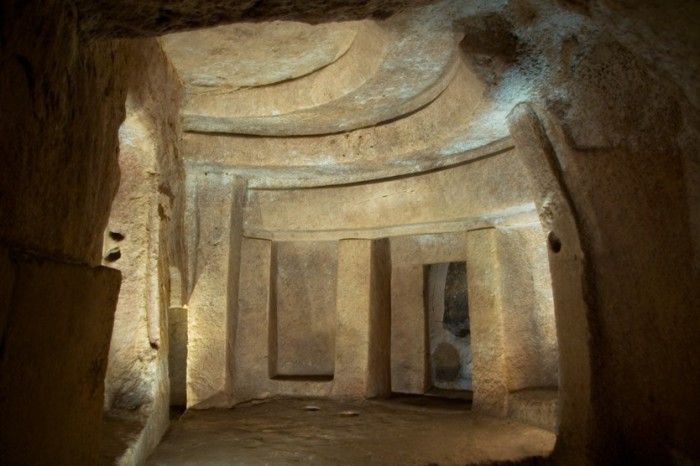
Malta
First you need to imagine that someone has decided to build an underground cemetery. At the same time, this someone wanted his creation to exist for many centuries. Therefore, Maltese temples were carved right into the rock. Interestingly, even today, with modern tools, it would be difficult to implement. The builders of Hal-Saflieni did this in 4000 BC, and of the tools they had only stone, obsidian and antlers.
The largest multi-level complex of these temples, which today is called the Hypoggium, was most likely modeled on the above-ground temples. False windows and doors can be found around its entire perimeter, as well as, what is especially striking, in the underground temple there is an imitation of a wooden roof. For thousands of years, dead bodies were left here to rot in carved recesses in the walls, until only bones remained of them, which were then taken for burial..
4. Mithraeum

Italy
Roman paganism was remarkably loyal to its various new gods. In the first century AD, many Roman soldiers began to worship the eastern god Mithra. Little is known today about the theology or religious practice of the followers of Mithra, but their surviving underground temples are known as «mitraeums».
Mithreum under «Big circus» in Rome is one of the best preserved. The temple includes sculptural friezes that depict Mithra at the time of the killing of a bull. Similar images have been found all over the Roman world. This suggests that the cult of Mithra may have included the ritual sacrifice of a bull..
5. Cave temple in Sinka Veche
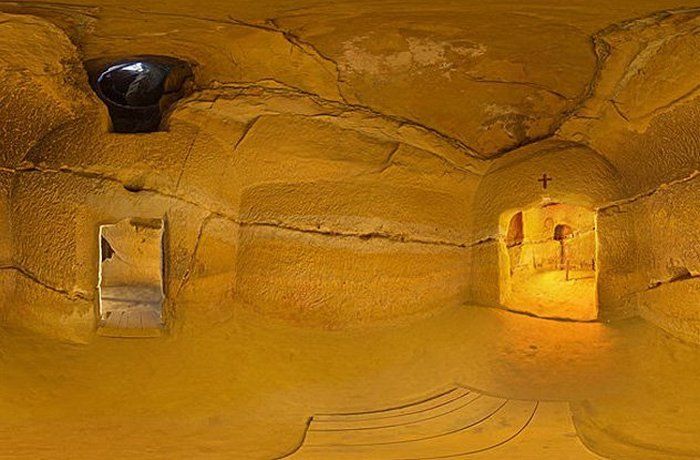
Romania
The underground complex at Sinka Veche is known by several names: cave temple, monastery and Temple of Fate. Despite the research that has been going on for a long time at this excavation site, no one knows exactly how old it is, who built it or why it was done..
There are nine separate caves, two of which were used as chapels, but there are non-Christian symbols on the walls (for example, the Star of David and the Yin-Yang sign). An atomic study of tool marks reveals that the temple was carved in the second century AD, but its original purpose remains mysterious..
6. Kunigunda Salt Church
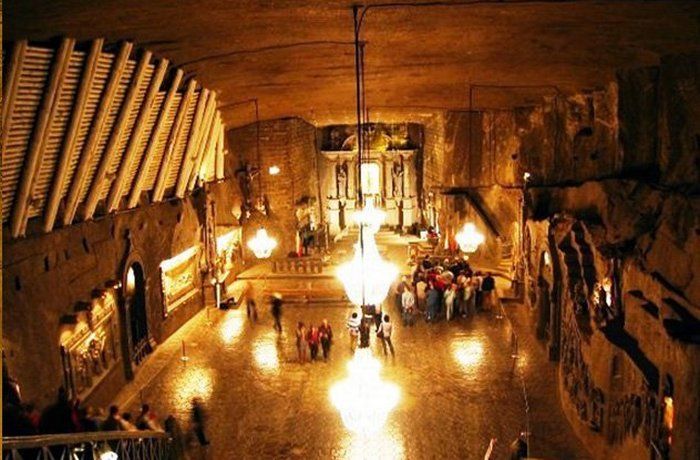
Poland
The mining industry has always been a dirty and dangerous business. In the 13th century, miners could only pray that they would not be overwhelmed. Not surprisingly, many of them turned to the gods for help through prayer. In the Wieliczka Salt Mine in Poland, miners carved a chapel out of salt. No one knows exactly how many of these places of worship once existed in the mine, as they were usually demolished while the mine was still open..
7. Salt Cathedral of Zipaquira
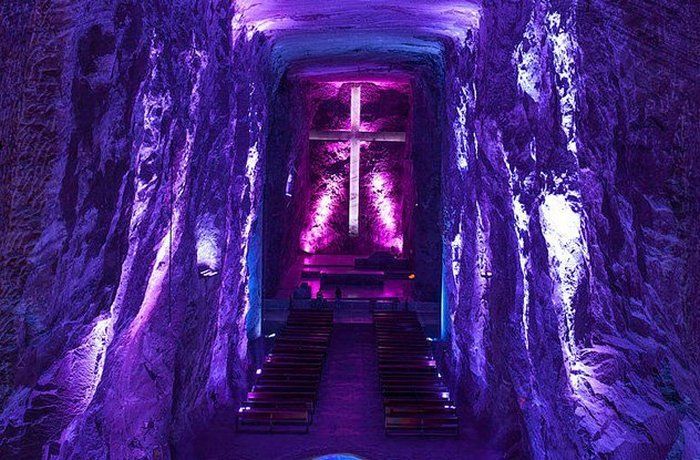
Colombia
The mines in Zipaquira have been operating since the 5th century BC. However, the cathedral, carved out of salt in this place, is much more modern. Small chapels existed in the mine before, but in the 1990s, the Cathedral in Wieliczka was renovated and enlarged. Nowadays, visitors to the mine can go down 150 meters underground and admire the cathedral next to the miners who still mine salt here. The temple has 14 chapels, each of which contains salt statues in the form of carved crosses. Today they have been adorned with LEDs that cast whimsical reflections on the salt sculptures..
8. Damanhur Temple
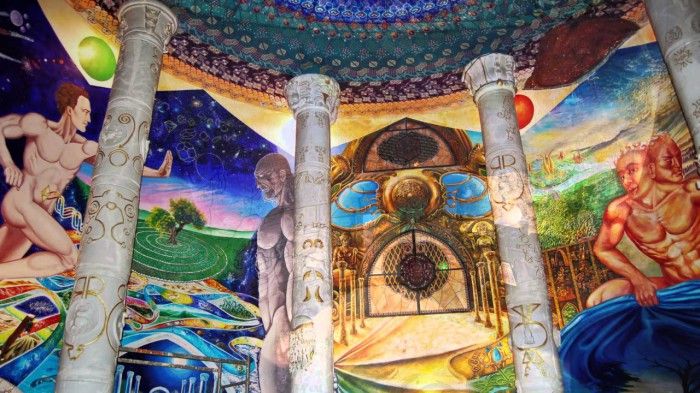
[B] Italy [/ B]
Damanhur is an ecovillage-commune in the foothills of the Alps. Although there are similar places around the world, none of them «Temple of Humanity». The founder of Damanhur Oberto Ayraudi began visions from early childhood – he saw temples. As Oberto grew up, he began to look for a place where he could turn these visions into reality..
Finding others who shared his goals, he began building underground temples in 1978. Because he kept the construction of his temples a secret and did not receive permission to build them, when the authorities discovered these temples in the 1990s, they wanted to stop all work. It is worth noting that now the building permit was given.
9. Batu Caves
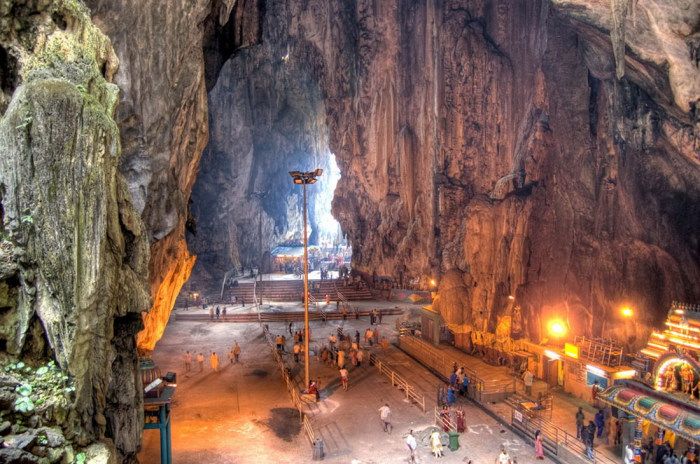
Malaysia
To reach the underground sanctuaries of Batu, pilgrims must first climb 272 steps. The cave cathedral, which is carved into the top of the mountain, has an arched roof 30 meters high. Various Hindu shrines can be found under this dome. During the Taipusam Festival, people who worship Murugan travel from Kuala Lumpur to the Batu Caves. They carry offerings on special platforms called «kawadis» on your shoulders. Most impressive during this festival is the act of mortification, during which fanatics pierce their cheeks, nose or ears. Others push their hooks under their skin..
10. Neanderthal caves
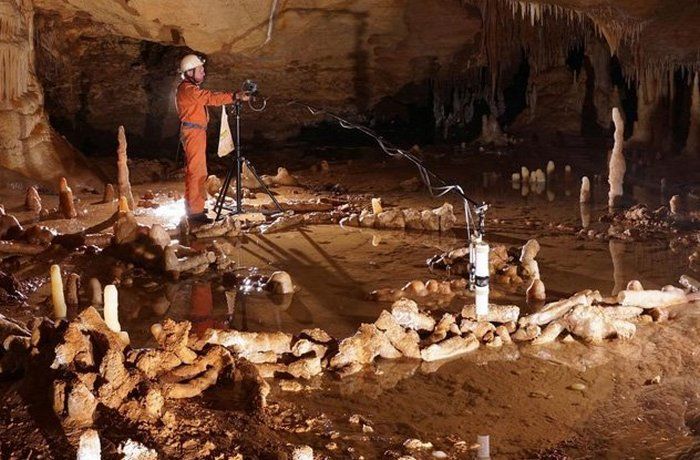
France
175,000 years ago, someone entered a cave in France and dared to walk 300 meters in pitch darkness. Here he broke 400 natural rocks, stalactites and stalagmites, making a man-made circle out of them. Whoever did this was surprisingly adventurous at the time. Whoever he was, they were clearly not a modern man. This structure is 100,000 years older than when the first modern humans came to Europe. The main theory is that this place was created by the Neanderthals..
And in continuation of the topic more 10 mysterious cave temples that will amaze even atheists.






